Telecom Equipments
Your Bulk, Our Core
OIL AND GAS PROJECTS ONLY
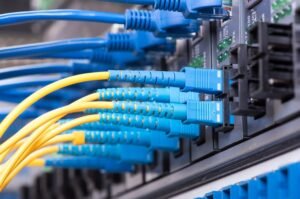
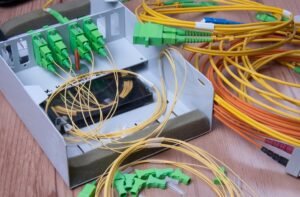
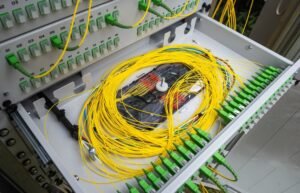

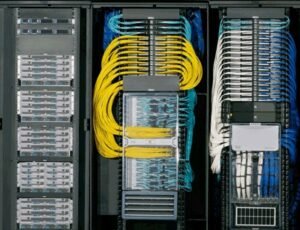
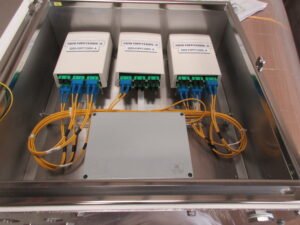
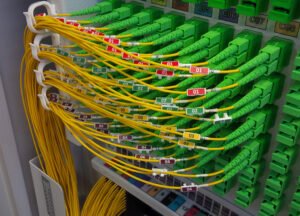
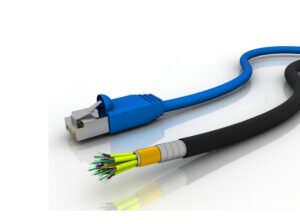
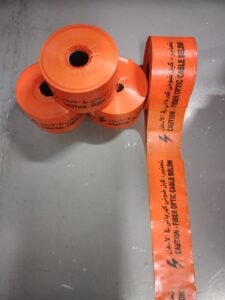
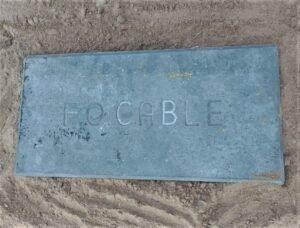
FOC cables, or fibre optic cables, come in several types, each with its own unique features and applications. Here are some of the most common types of FOC cables:
- Single-mode fiber optic cable (SMF): This type of cable is designed to carry a single beam of light over long distances with minimal signal loss. It has a small core diameter of 9 microns, and is typically used in applications where high bandwidth and long distance transmission is required, such as in telecommunications and data centers.
- Multimode fiber optic cable (MMF): This type of cable has a larger core diameter of 50 or 62.5 microns, allowing multiple beams of light to travel through the cable at the same time. It is less expensive than SMF and is commonly used in shorter distance applications, such as LANs, CCTV, and audio-visual systems.
There are several different types of Cat cables, which are also known as Category cables, used in Ethernet networking applications. Here are some of the most common types:
- This is one of the earliest versions of Ethernet cables and supports data rates of up to 100 Mbps over distances of up to 100 meters. It features four twisted pairs of copper wires and is commonly used for both residential and commercial applications.
- This is an enhanced version of Cat5 cable that supports data rates of up to 1 Gbps over distances of up to 100 meters. It features the same four twisted pairs of copper wires as Cat5 but with improved shielding to reduce crosstalk and interference.
- This is an improved version of Cat5e cable that supports data rates of up to 10 Gbps over distances of up to 55 meters. It features four individually shielded twisted pairs of copper wires and improved insulation to reduce crosstalk and interference.
- This is an augmented version of Cat6 cable that supports data rates of up to 10 Gbps over distances of up to 100 meters. It features four individually shielded twisted pairs of copper wires and improved insulation to reduce crosstalk and interference.
- This is a newer version of Ethernet cable that supports data rates of up to 10 Gbps over distances of up to 100 meters. It features four individually shielded twisted pairs of copper wires, along with additional shielding to reduce interference and crosstalk.Each type of Cat cable offers different levels of performance and is designed for specific applications. The choice of cable depends on the required data rates, transmission distances, and the level of interference and crosstalk that may be present in the environment.
A serial link cable is a type of cable used to transmit data between devices using a serial communication protocol. Serial communication involves transmitting data one bit at a time over a single wire or pair of wires, and is often used in applications that require low data rates or long transmission distances.
Serial link cables can be used to connect a wide range of devices, including computers, printers, routers, switches, and other networking equipment. They are typically composed of two or more wires, with each wire carrying a specific signal or data bit.
The most common types of serial link cables include RS-232, RS-422, and RS-485, each with their own specific characteristics and applications.
Serial link cables are often preferred over other types of cables, such as Ethernet or USB, for certain applications due to their simplicity, reliability, and low cost. However, they are generally slower than other types of cables and are more susceptible to interference and noise, which can affect data transmission quality.
The main difference between Cat cables and serial link cables is their intended use and the way they transmit data. While Cat cables are designed for high-speed Ethernet networking, serial link cables are typically used for serial communication between devices.
Fiber optic splice kits are used to connect two or more optical fibers together, allowing for the transmission of optical signals over long distances. They typically contain all the necessary components and tools for performing a splice, including fusion splicers or mechanical splicers, cleavers, fiber strippers, splice trays, and splice sleeves
Here are some of the key components typically found in fiber optic splice kits:
Fusion splicer: This is a machine that uses an electric arc to melt and fuse two optical fibers together, creating a permanent and low-loss splice
Mechanical splicer: This is a device that mechanically aligns two optical fibers and holds them together using a splice sleeve or clamp
Cleaver: This is a tool used to cut and prepare the fiber ends before splicing. A good cleaver will produce a clean, flat, and perpendicular end face
Fiber strippers: These are tools used to remove the outer jacket and buffer coatings from the fiber, exposing the bare glass fiber
Splice sleeves: These are plastic tubes used to protect and secure the splice. They come in various sizes and types, including heat-shrink, crimp, and twist-on
Splice trays: These are plastic or metal trays used to organize and manage the splices. They typically have slots or holes for holding the splice sleeves and fibers
A patch panel is a device used in network cabling to manage and organize the connections between various network devices, such as computers, servers, switches, and routers. It provides a central location where all the network cables terminate and can be easily connected or disconnected as needed.
Patch panels come in various sizes and types, depending on the number of ports and the type of connector used. Some common types of connectors include RJ45, ST, SC, and LC, which are used for Ethernet, fiber optic, and other types of network cables.
The main benefits of using patch panels include:
Flexibility in making changes or additions to the network
Improved network performance and reliability
Reduced downtime and maintenance costs
Simplified troubleshooting and fault isolation
A patch cord is a type of cable that is used to connect two network devices, such as a computer and a switch or a switch and a router. It typically has connectors on both ends that are compatible with the device’s network port, and it is used to transmit data signals between the two devices
Here are some common types of patch cords:
Ethernet patch cords: These are the most common type of patch cord used in networking applications. They typically have RJ45 connectors on both ends and are used to connect computers, switches, routers, and other Ethernet devices
Fiber optic patch cords: These are patch cords that use fiber optic cables to transmit data signals. They are typically used for longer distances or high-speed data transmissions and come in various types, such as single-mode and multimode, and various connector types, such as LC, SC, and ST
Simplex patch cords have one fiber, while duplex patch cords have two fibers and are used for bidirectional data transmission. The type of patch cord required will depend on the specific application and requirements of the network
A pigtail is a short length of fiber optic cable that has a connector on one end and a length of exposed fiber on the other end. It is used to terminate the end of a fiber optic cable run and to connect the cable to a patch panel or other fiber optic equipment.
Like patch cords, pigtails can be either simplex or duplex, depending on the number of fibers they contain
A simplex pigtail consists of a single fiber with a connector on one end, typically an SC or LC connector, and a length of exposed fiber on the other end. It is used for applications that require only one-way data transmission, such as video or audio signals
A duplex pigtail, on the other hand, consists of two fibers, each with a connector on one end, typically an SC or LC connector, and a length of exposed fiber on the other end. It is used for bidirectional data transmission, such as Ethernet or telecommunications applications
- FLEXIBLE CONDUIT
- CONDUIT GLANDS
- FUSION SPLICE SLEEVES
- PRE-POLISHED FIBER CONNECTORS
- CABLE GLANDS
- RJ 45 CONNECTOR BOOT
- SINGLE MODE FIBER OPTIC CONNECTORS
- MULTIMODE FIBER OPTIC CONNECTORS
- A FOPP (Fiber Optic Patch Panel) Outdoor Enclosure is a weather-resistant ,a secure and protected housing for fiber optic equipment and connections that are exposed to harsh weather conditions, such as rain, extreme temperatures, and UV radiation
- FOPP Outdoor Enclosure for hazardous areas is a specialized design to house fiber optic equipment and connections in environments where there is a risk of explosion or fire due to the presence of flammable gases, vapours, or combustible dust. It is designed to be explosion-proof and to meet specific safety standards and regulations
- It typically includes fiber optic splice trays or modules, cable management and routing components, and patch panels to terminate and connect fiber optic cables.
PE WARNING TAPES
- 150X100 MICRONS
- 250X100 MICRONS
PE WARNING TILES
- 1000X250X4MM
- 1000X250X6MM
- 1000X400X10MM
CONCRETE TILES
- 500X250X50MM
- 300X150X50MM
- 200X220X50MM
